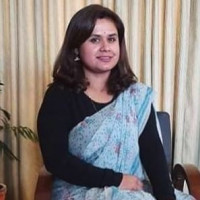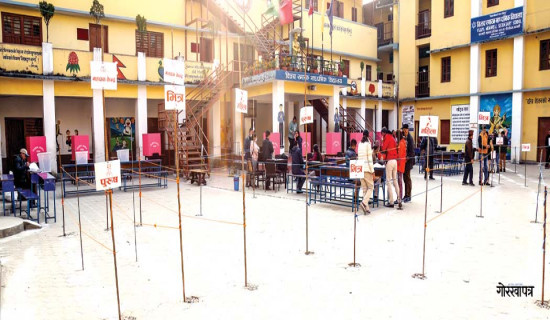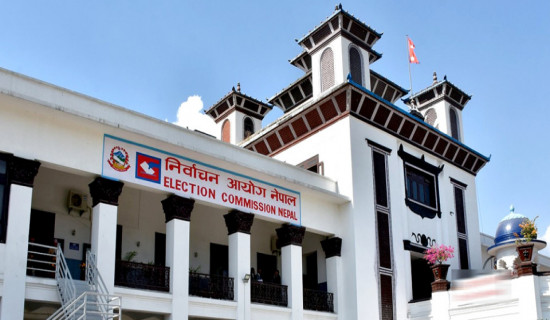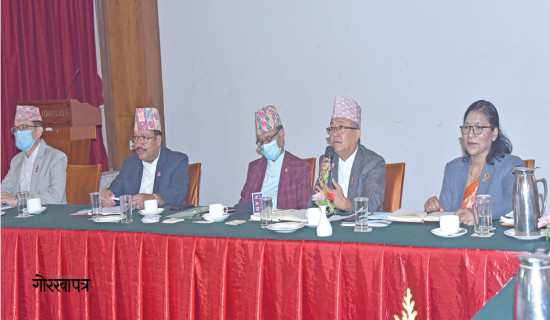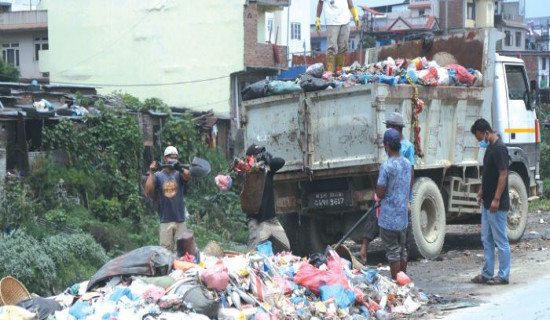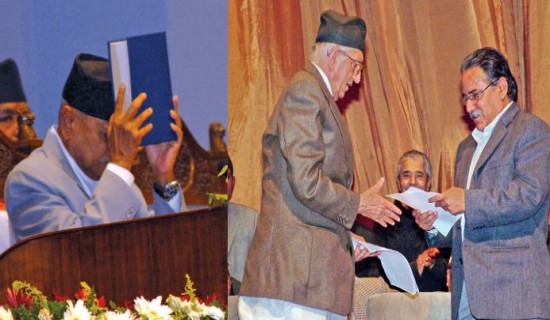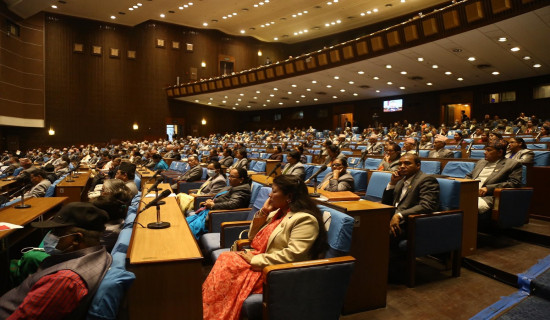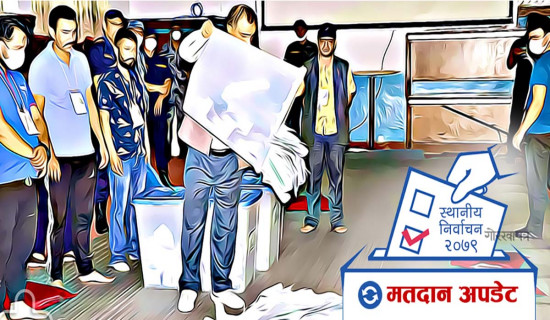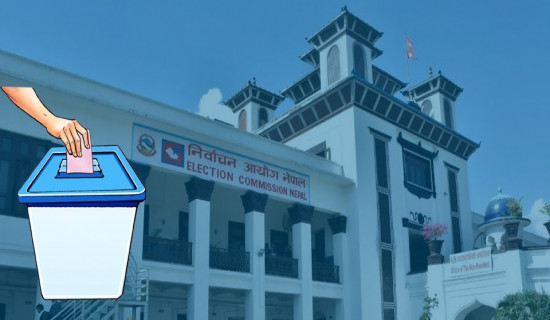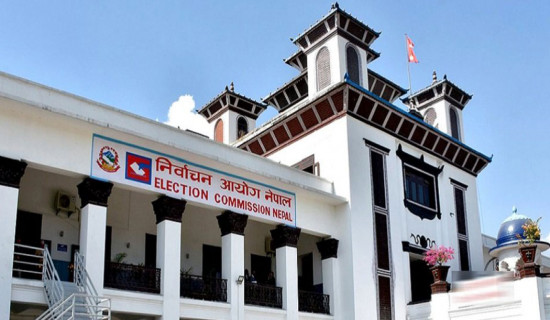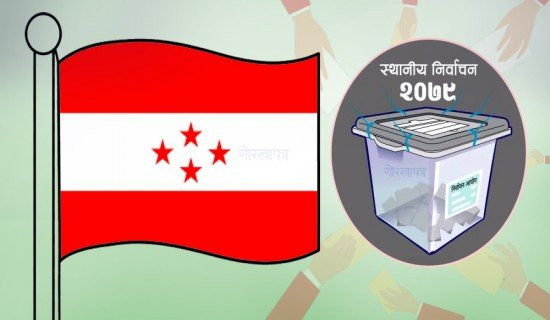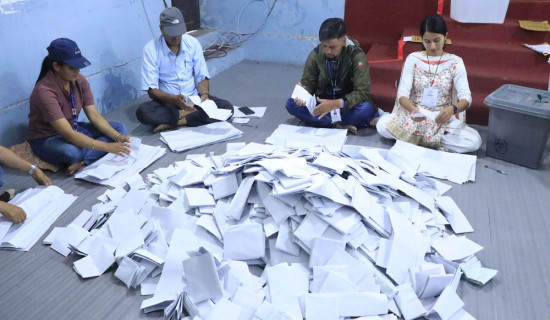- Monday, 17 November 2025
Elections held peacefully nationwide
The elections to the House of Representatives and Provincial Assemblies on Sunday remained largely peaceful, not to mention the clashes and tensions at some polling stations. A preliminary report of the Election Commission (EC) has shown 61 per cent voter turnout in the elections held across the country.
Voting for parliamentary polls today
Eligible voters from all over the country are exercising their franchise to elect members of House of Representatives and Provincial Assemblies on Sunday. And the Election Commission (EC) has announced a raft of measures to ensure the elections are held in a free, fair, fearless and credible manner. A total of 17,988,570 people – 9,140,806 males and 8,847,579 females – are participating in this exercise considered by many across the world as the essence of democracy. Of the total 275 members of House of Representatives (HoR), 165 will be elected through direct voting while the remaining 110 will be elected through the proportional representation (PR).
Voting for parliamentary polls today
Eligible voters from all over the country are exercising their franchise to elect members of House of Representatives and Provincial Assemblies on Sunday. And the Election Commission (EC) has announced a raft of measures to ensure the elections are held in a free, fair, fearless and credible manner.
EC allows candidates to use online media for canvassing
The Election Commission has decided to allow the political parties and candidates to publish and broadcast advertisements in the online media for the purpose of forthcoming elections to the House of Representatives (HoR) and Provincial Assemblies.
2,412 in fray for HoR and 3,224 for provinces under FPTP
Altogether 5,636 candidates are contesting the elections to the House of Representatives and seven provincial assemblies under the First-Past-The-Post category on November 20. Of them, 2,412 candidates, 2,187 males and 225 are females, are vying for 165 seats of the HoR, according to Assistant Spokesperson for the Election Commission-Nepal Rishiram Bhusal said.
Election Commission to allot only 15 days for poll canvassing
The Election Commission (EC) has decided to print the election symbols of only those political parties and independent candidates who have filed their candidacies in the concerned constituency under first-past-the-post (FPTP) election to the House of Representatives and the Provincial Assemblies. Speaking at an interaction the Commission held with editors of mainstream media here on Sunday, Chief Election Commissioner Dinesh Kumar Thapaliya said the election symbols of only those political parties and independent candidates who filed their nomination under FPTP category would be printed on the ballot paper.
Valley’s waste disposal resumes
After a disruption for 10 consecutive days, garbage collection in Kathmandu Valley resumed on Tuesday amid continued protest of the locals of Sisdole and Bancharedanda landfill of Nuwakot.
Women's representation better in leadership, lower in number
The number of women elected to the deputy chief positions has significantly decreased compared to the previous election held in 2017. However, the number of ladies elected in leading positions of the local units has slightly increased in this local level election. The recently held local poll showed a slight increase in the number of women elected in the chief positions, said Surya Prasad Aryal, Assistant Spokesperson of Election Commission (EC).
Republic System Has Empowered People
On May 28, 2008, Nepal abolished the 240-year-old monarchy and ushered in new system of governance. The parliament promulgated the new charter in 2015 that enshrined the new system of governance based on federal democratic republicanism, secularism and inclusiveness. It also envisaged a socialism oriented economy in the country.
Government to adopt policy of labour audit
The government on Tuesday announced plans to finalise the bill to amend the Citizenship Act, under consideration in the Parliament, based on consensus. The policy and programme of the government unveiled by President Bidya Devi Bhandari mentioned that the Citizenship Bill will be finalised soon. Addressing both the Houses of the Federal Parliament, President Bhandari said, “Initiatives will be taken to finalise the Citizenship Bill under consideration in the Parliament on the basis of consensus at the earliest.”
Vote counting ends in 733 local levels
Election results of 733 local bodies, including 275 municipalities and 458 rural municipalities, have been made public as of 8:00 pm Monday. The final results of around 98 per cent of the 753 local levels are out now. According to the Election Commission (EC), the vote count is progressing in 16 municipalities and two rural municipalities while it has been stalled in two local levels. The result of 19 local levels with high number of voters including Kathmandu, Lalitpur, Pokhara and Bharatpur metropolis and some other local levels where re-election were held remain to be announced.
Results of around 93 % local level elections out
As the vote count protracts for the ninth consecutive day after May 13’s local level elections, over 93 per cent results of local bodies have been made public as of Saturday evening. As of 8:00 pm on Saturday, results of 694 of 753 local units have been made public. According to the Election Commission (EC), election results of 247 municipalities, 447 rural municipalities and 6,381 wards have been made public. Altogether 247 mayor/deputy mayors, 447 rural municipalities chairpersons/vice-chairpersons, 6,381 ward chairpersons, 6,377 women ward members, 6,264 Dalit women ward members and 12,757 ward members have been announced elected.
Results of around 90 % local levels out
After eight days since the May 13’s local level elections, around 90 per cent results of local bodies have been made public as of Friday. The Election Commission (EC), the body responsible for conducting the election, has aimed to conclude the vote counting by May 24. Talking to The Rising Nepal, the EC’s Assistant Spokesperson Surya Prasad Aryal said the EC has instructed the concerned election offices to conclude the vote counting and publish the final results by May 24.
NC continues lead in vote counting
Ruling Nepali Congress has emerged as the biggest party from the local polls, as it has already won the key posts in the largest number of local bodies while its candidates are leading in more local levels. The main opposition CPN-UML, which had emerged as the largest party winning 294 local units in the 2017 local poll, is trailing behind the NC. Vote count is progressing on the sixth day after Friday’s local level elections. As of 8:41 pm on Wednesday, the NC has won 221 local units and maintained lead in 78 while the UML has won 138.
NC leading vote count
As the vote count is progressing on the fifth day after Friday’s local level elections, the ruling Nepali Congress has taken lead with more of its candidates getting elected and leading in the counting in the largest number of local bodies across the nation. Candidates of the ruling NC have been elected as chiefs in 160 local levels and they are leading in 134 posts of chiefs.

